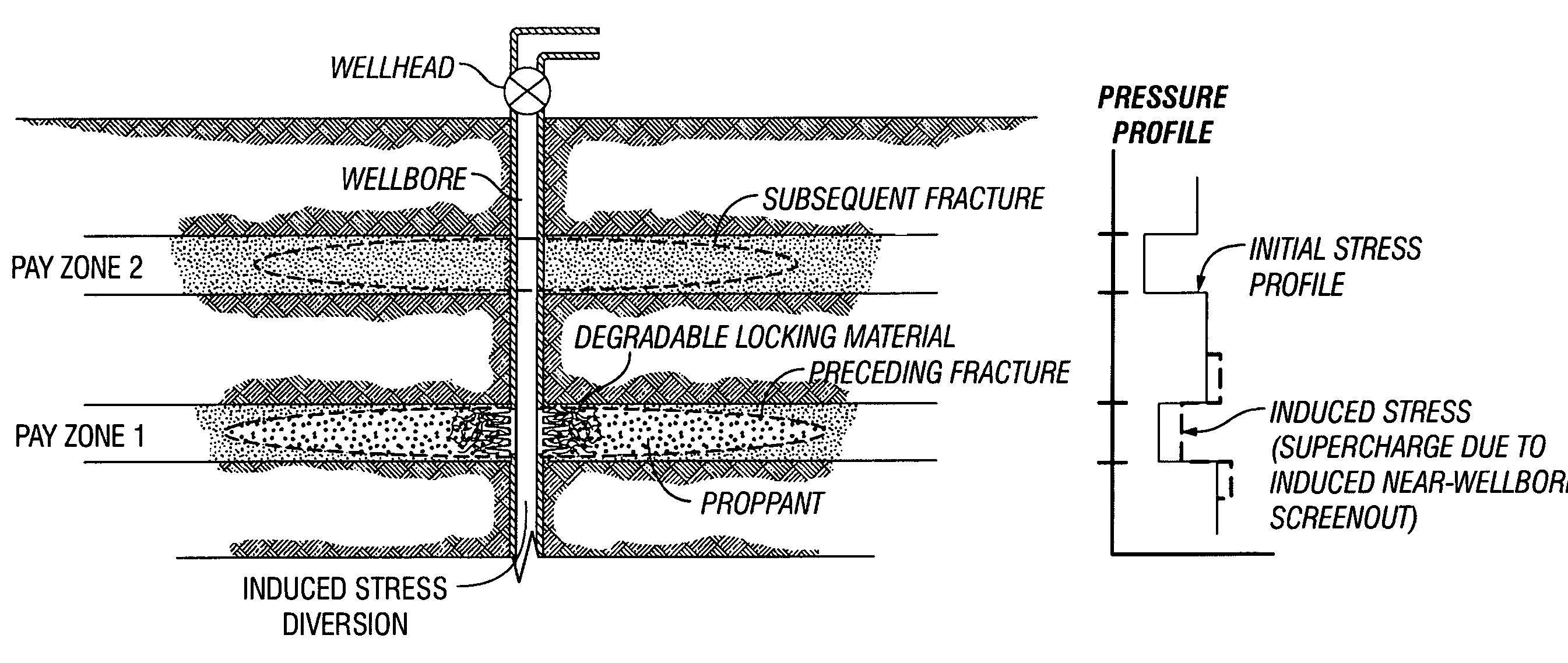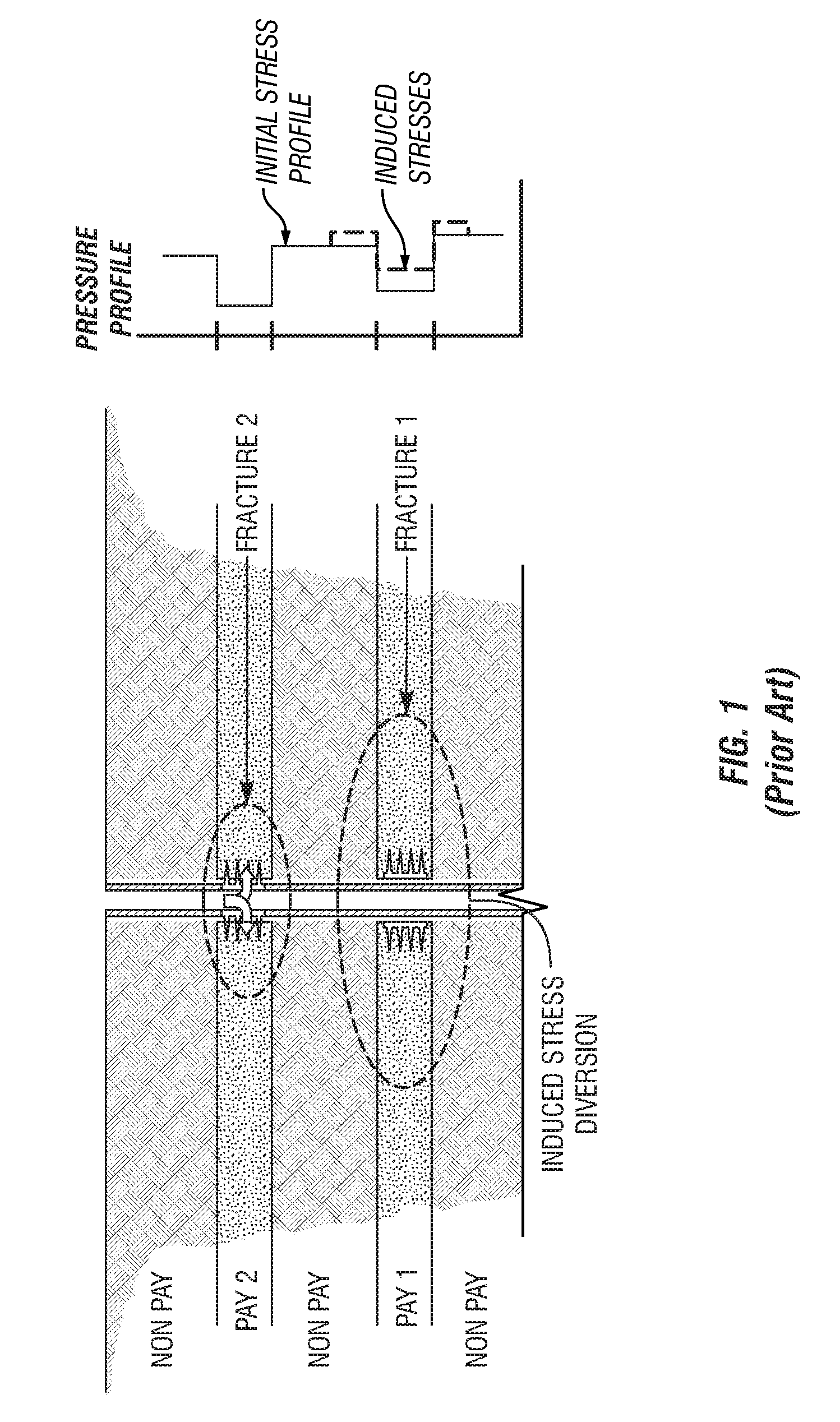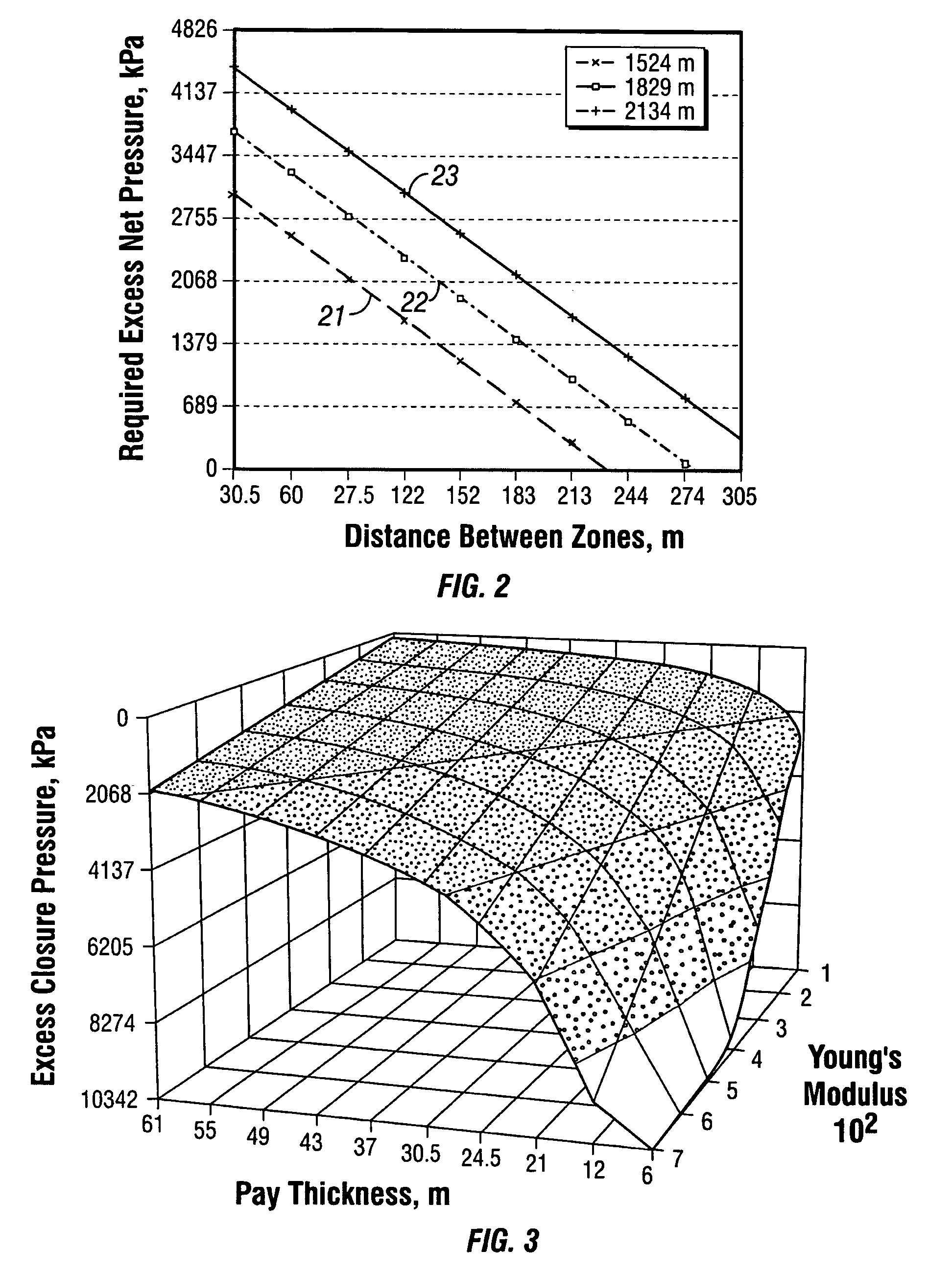Degradable material assisted diversion or isolation
a technology of degradable materials and diversion or isolation, which is applied in the direction of fluid removal, borehole/well accessories, chemistry apparatus and processes, etc., can solve the problems of fractures not completely closing, inability to completely close, and inability to completely stabilize the fractur
- Summary
- Abstract
- Description
- Claims
- Application Information
AI Technical Summary
Benefits of technology
Problems solved by technology
Method used
Image
Examples
Embodiment Construction
[0013]A method for well treatment by forming a temporary plug in a fracture, a perforation, or a wellbore (or more than one of these locations) penetrating a subterranean formation is provided. A method of well treatment in accordance with one embodiment of the invention includes: injecting a slurry comprising a degradable material, allowing the degradable material to form a plug in a perforation, a fracture, or a wellbore penetrating a formation; performing a downhole operation; and allowing the degradable material to at least partially degrade after a selected duration such that the plug disappears. The degradable materials may be a polymer or co-polymer of esters, amides, or other materials. The degradable material degrades after a selected duration under the downhole conditions such that no additional intervention is needed to remove the plug.
[0014]The temporary blockage by plug formation allows other well operations to be performed without damaging the existing fracture or with...
PUM
 Login to View More
Login to View More Abstract
Description
Claims
Application Information
 Login to View More
Login to View More - R&D
- Intellectual Property
- Life Sciences
- Materials
- Tech Scout
- Unparalleled Data Quality
- Higher Quality Content
- 60% Fewer Hallucinations
Browse by: Latest US Patents, China's latest patents, Technical Efficacy Thesaurus, Application Domain, Technology Topic, Popular Technical Reports.
© 2025 PatSnap. All rights reserved.Legal|Privacy policy|Modern Slavery Act Transparency Statement|Sitemap|About US| Contact US: help@patsnap.com



